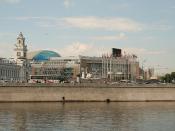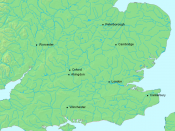Agriculture during the medieval time was a very complex system. The
weather played a major role in the harvest. A week of unpleasant rain in May,
followed by an abnormal cold, humid summer might have thrown off the summer
harvest, resulting in a shortfall of food. Due to a surplus left over from the
previous harvest, no one went hungry. But after a couple of bad harvests, the
surplus began to run out. This happened in Europe in 1044. The Famine reared
its ugly head, in part, caused by years of unfavorable harvest and inadequate
crops, but it was also complicated by a plague that seemed to thrive on human
starvation.
By 1043, northwest Europe was in disruption. Food prices which had
been high in 1042, remained high, especially in Belgium. No doubt the high
price of food was a result of the poor harvests from both the 1042 winter and
summer crops.
From Waverly in England and Angers in France, to St. Gall in
Switzerland and Gembloux in Belgium, reports of famine, disease, and death
circulated. No relief came in the summer of 1043. In France and Germany, there
were reports of a terribly wet and stormy summer. An entry from Swabia, a
province in south-central Germany, best summed up the situation: 'The entire
summer almost changed to winter by winds and rains, a great lack of grain and
wine came about.' (LeRoy 27) These rains must have been particularly harsh.
The wind and rain pounding away at the growing summer crop lowered not only
yields but quality as well. Almost all of the summer labors were adversely
effected. No doubt the rains barraged the grazing cattle as well.
If Emperor Henry III and his court had played ice hockey, December
would have been a glorious month indeed; there...


